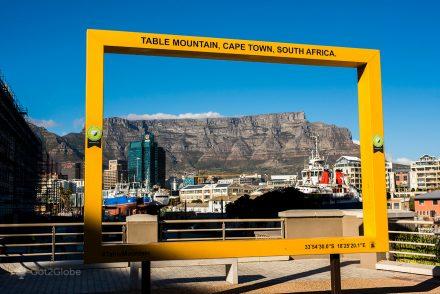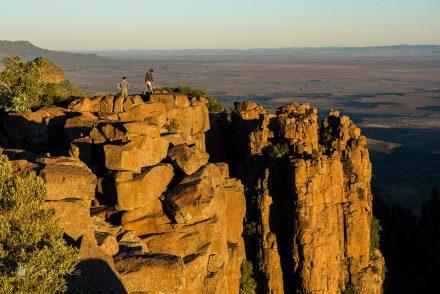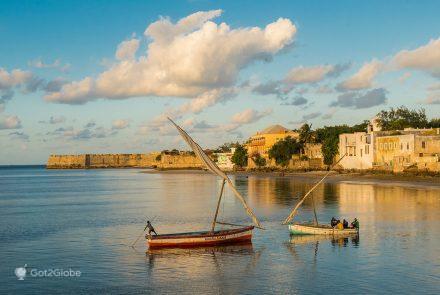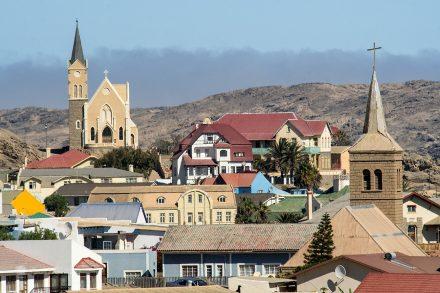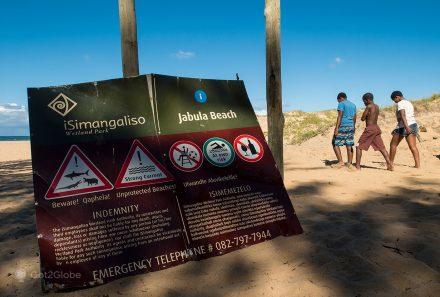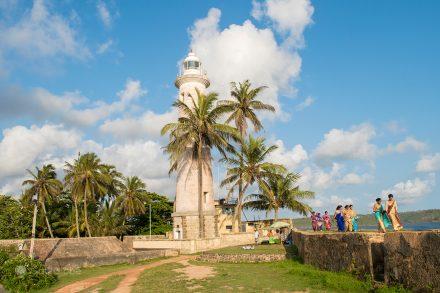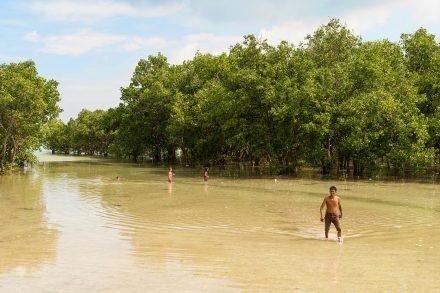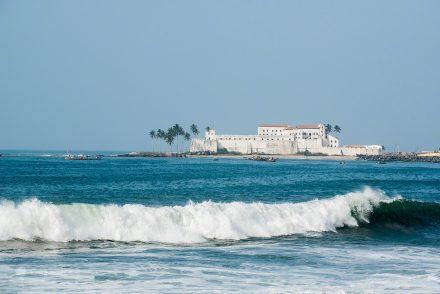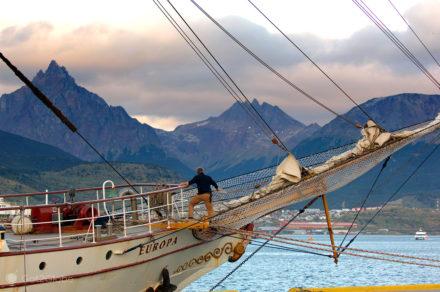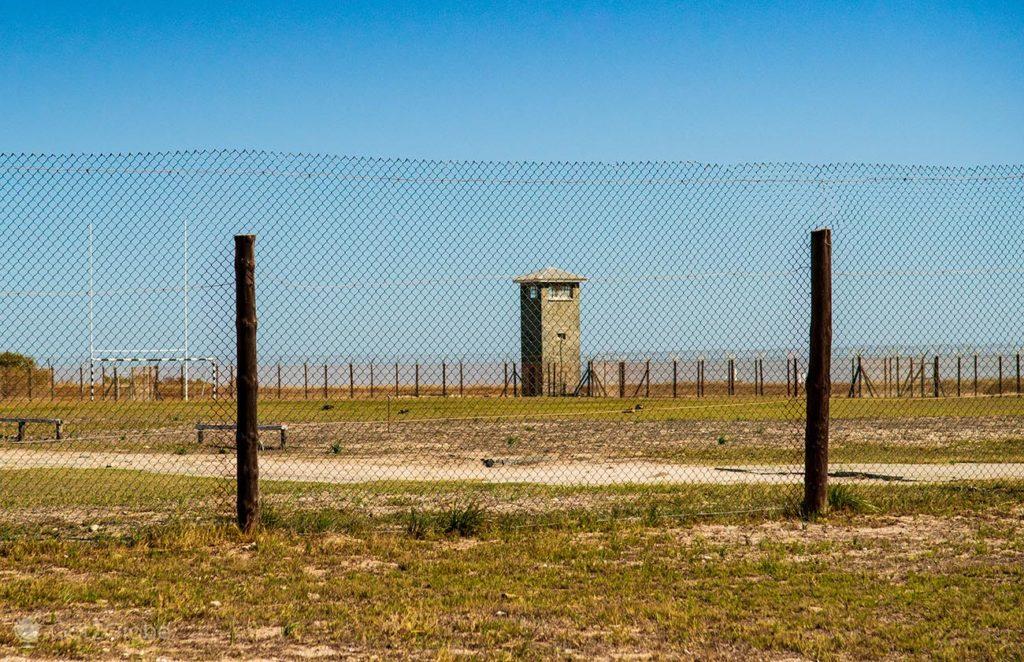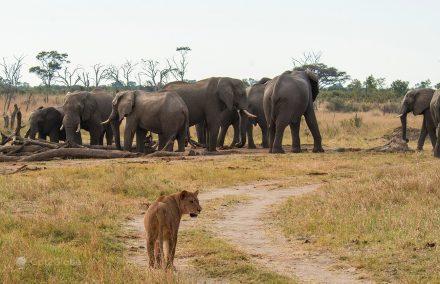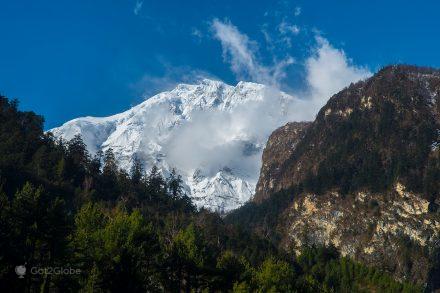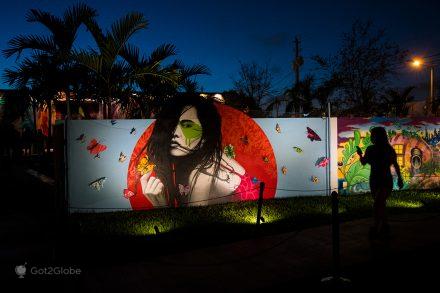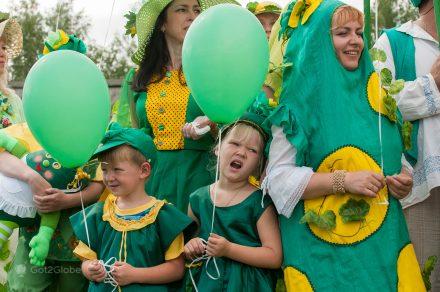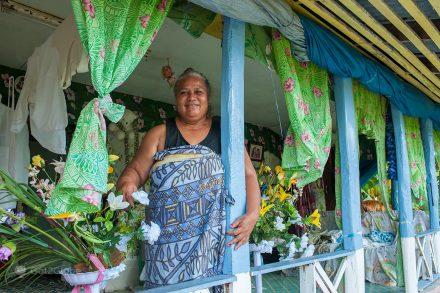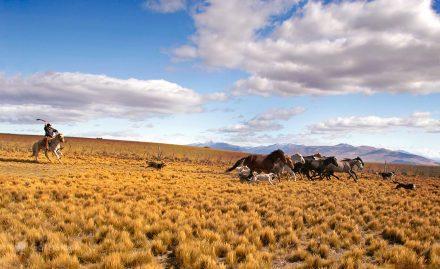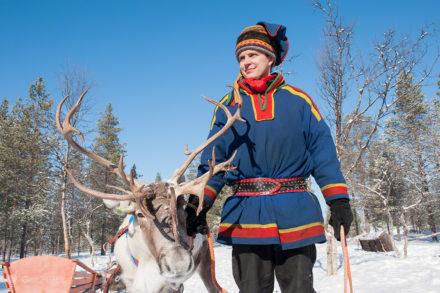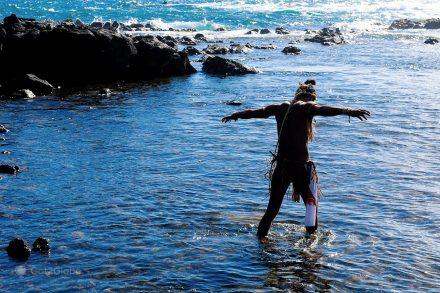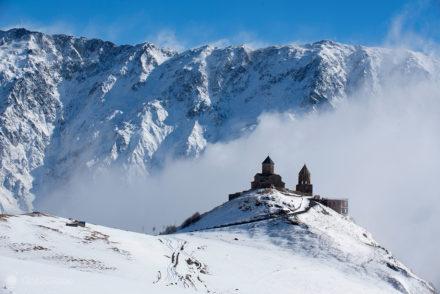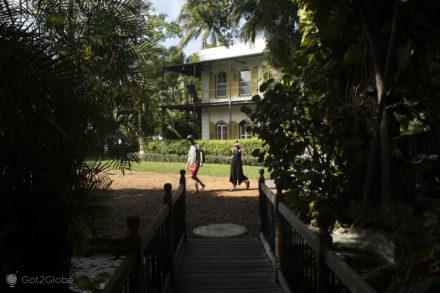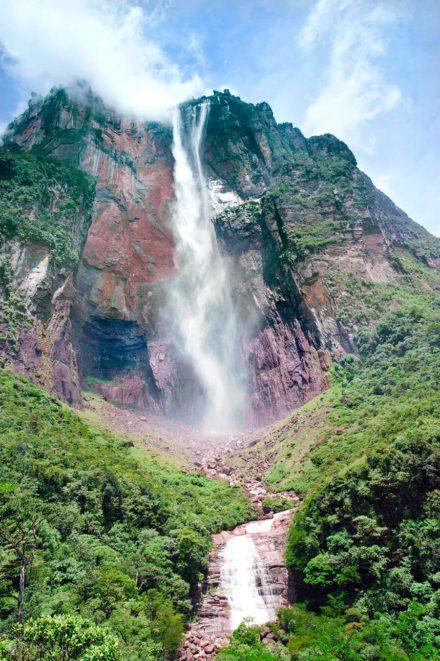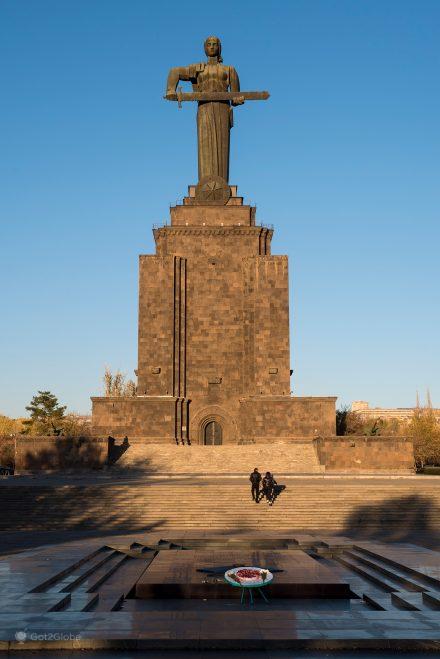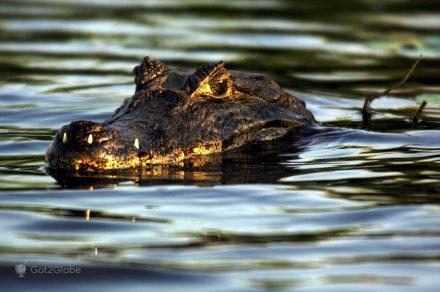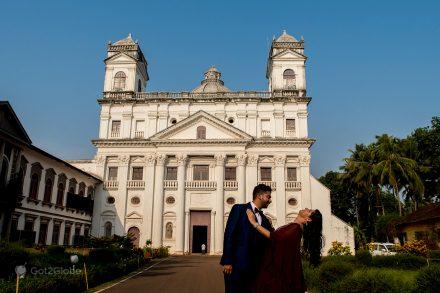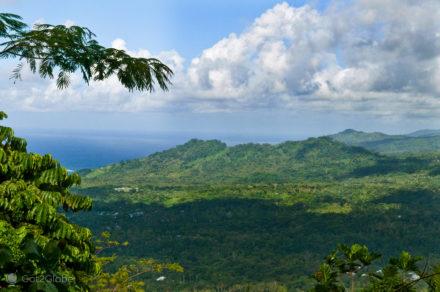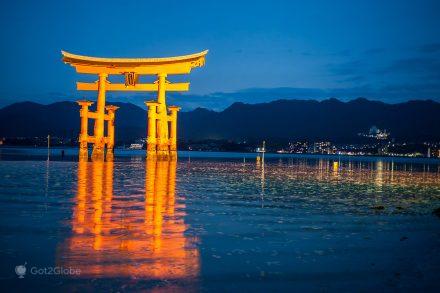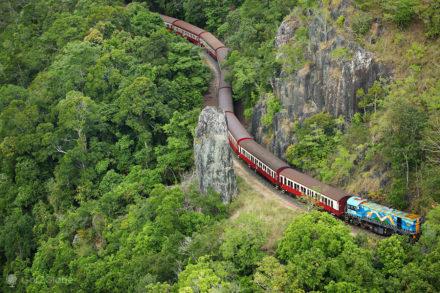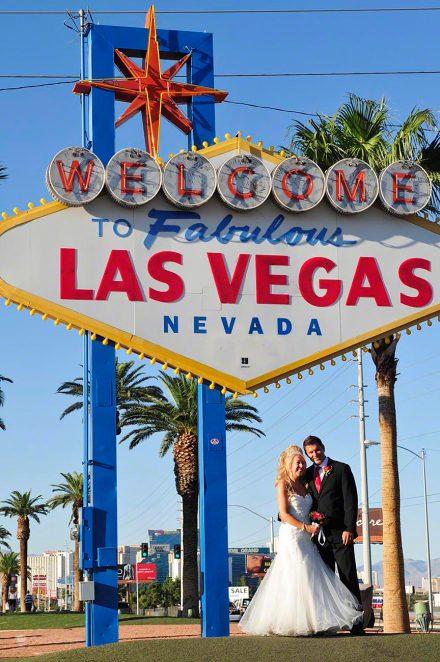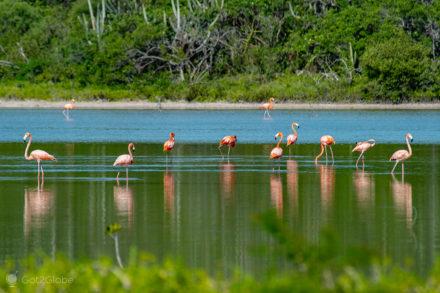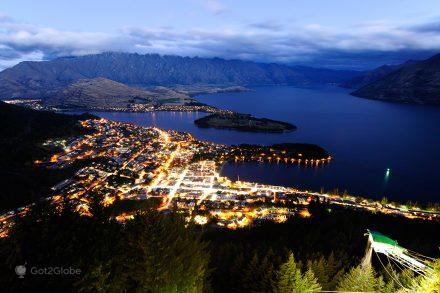According to the calendar, when we arrive in Cape Town from a long South African crossing in a truck, winter must have already set in.
And, however, the days succeed each other with clear skies and heat at around 30º, nothing to warm the frigid waters, always full of thick algae that punish the cliffs and hyperbolic sands of these parts. Thanks to the Adamastor by meteorological benevolence, we delight in its dreaded territory.
Even if the atmosphere is sunny, the wind blows furiously every time we approach the abysses so that it lurks the Table Mountain, the imposing and crude plateau that the black continent exhibits as its ultimate orographic work.
Lock us up with the remnants of the waterhole blown from the southern horizon, from where the mountain unfolds in even more capricious forms and immerses itself, as if who doesn't even want to know, in the painful collisions of the sea.
There, where in a no less poignant mission, the History He brought them together in a long, strenuous embrace.
It was impossible for us to resist the appeal of that other place. We wouldn't be long in chasing him.
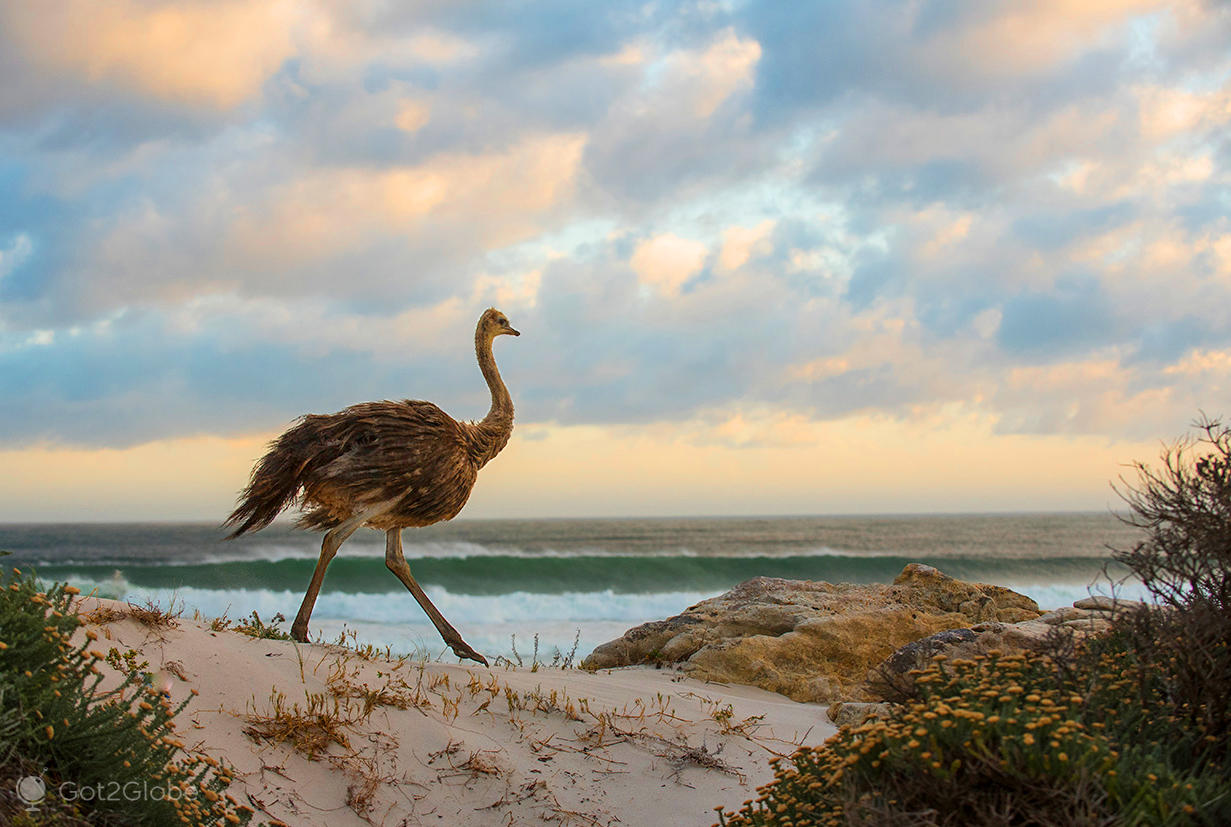
A juvenile ostrich roams the white sand in search of its parents.
The Lusitanian Epic of Cabo das Tormentas Passage
At the turn of the XNUMXth to the XNUMXth century, Portuguese men embarked on a southern route feared the silhouette of this plateau like no other elevation they had passed.
They regarded it as a bad omen of afflictions and more than probable misadventures caused by the battle between the two vast oceans: the Atlantic which they already tamed; and, to the east, the Indian Ocean of which little or nothing they could guess.
The heightened fear of Terra Incognita below Cape Bojador aroused in their minds a panoply of mirages and paranoia. Gradually, at the cost of much experience and collective resilience, Portuguese sailors learned to defend themselves.
With Bartolomeu Dias at the helm, they rounded Cape Tormentas and thus began to demystify the unknown. The feat had the continuity it deserved. Not for that reason the crossing became easy.
Forty-five years had passed since Dias' achievement. Fear was already secular. Halfway through the newly opened Way to the Indies, the almost supernatural coast that had caused it for so long also left Luís de Camões in trouble.
It was the spring of 1533. Camões continued on board the ship “São Bento”, part of the fleet of Fernão Álvares Cabral that sailed the route previously traveled by Vasco da Gama.
Around the Cape of Good Hope, the “São Bento” and three other vessels found themselves engulfed in a brutal storm.
Only “São Bento” was saved.
Luís Camões' Homage to the Pioneer Crossing of Cabo das Tormentas
Camões had fortune on his side, but he felt on his icy skin and goosebumps the inspiration to perpetuate, in the V song of “Lusíadas”, the monstrous imagery that frightened even the most intrepid sea wolves.
39
It didn't end, when a figure
If it shows us in the air, robust and valid,
With shapeless and very large stature,
The heavy face, the scrawny beard,
The sunken eyes, and the posture
Ghastly and evil, and the earthy and pale color,
Filled with dirt and frizzy hair,
The black mouth, the yellow teeth.
40 (...)
A tone of voice speaks to us hideous and thick,
That seemed to come out of the deep sea.
Goosebumps on flesh and hair
Me and everyone, just by hearing and seeing him.
We continued in search of what, over the centuries of Discovery, had caused it.
From Cape Town to the Cape that Gives it its Name
We departed the coastal district of Sea Point on a misty Saturday morning. We follow the road that winds, almost always by the ocean, at the base of the cliffs south of Cape Town.
We detoured to the wide cove of Hout Bay at that hour, full of sportsmen dedicated to getting rid of the bad energies of the week.
We continue up the M6 road. We cross to the east, aiming for Simons Town, a town that attracts hordes of outsiders intrigued by the penguin colonies resident around Boulders Beach.
From there, heeding repeated baboon crossing warnings and the eventual presence of apes, we made our way down the east coast.
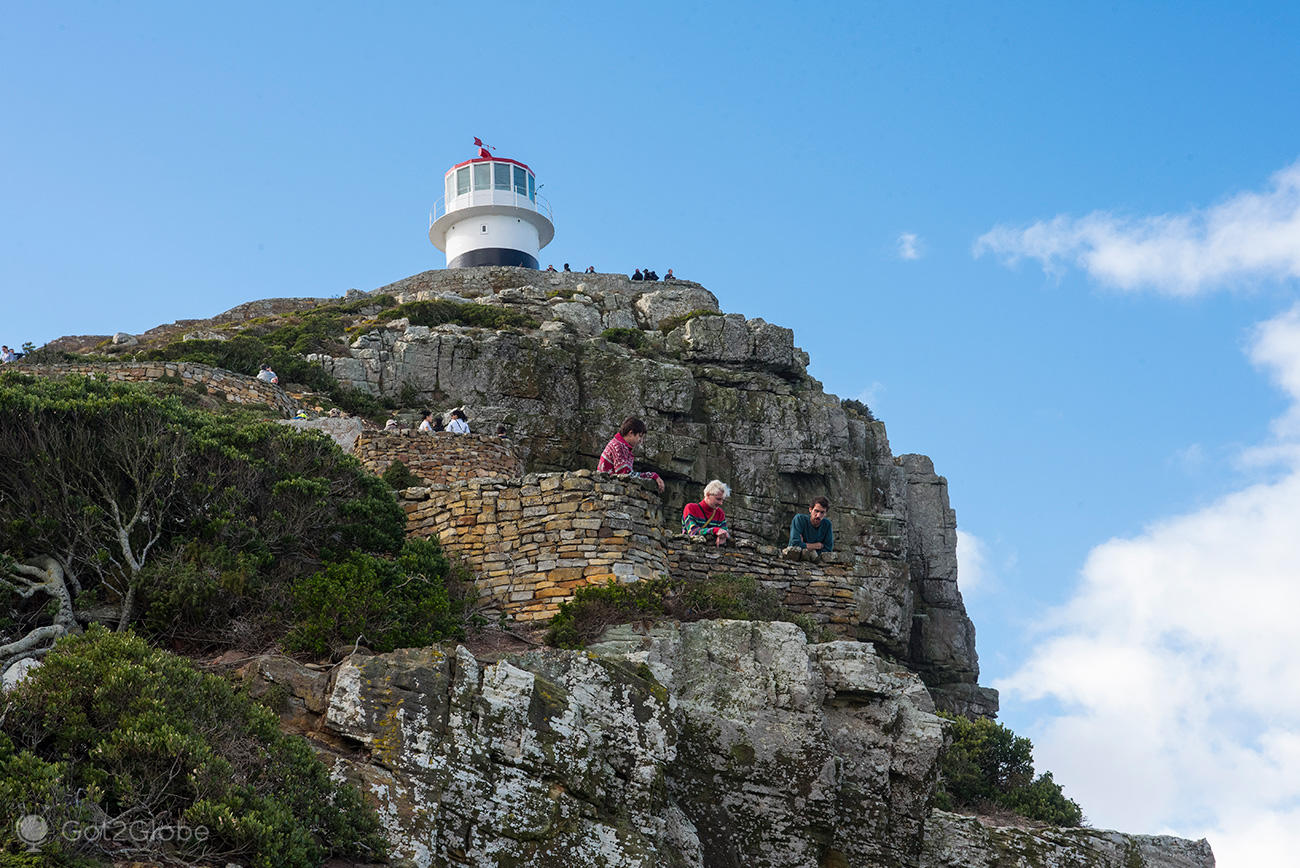
The Ponta do Cabo lighthouse, on one of the highest coastal points of the Cabo Peninsula.
The first clue we have of the Cape is the red and white lighthouse on the highest of the headlands. We ascend to its heights. During the climb, on each balcony where we try to peek at the scenery below, we are almost swept away by the insane wind that punishes the west slope.
We descended the steps we had previously conquered and cut back to the path that led to the northern section of the Cape, the one that sailors had to pass first.
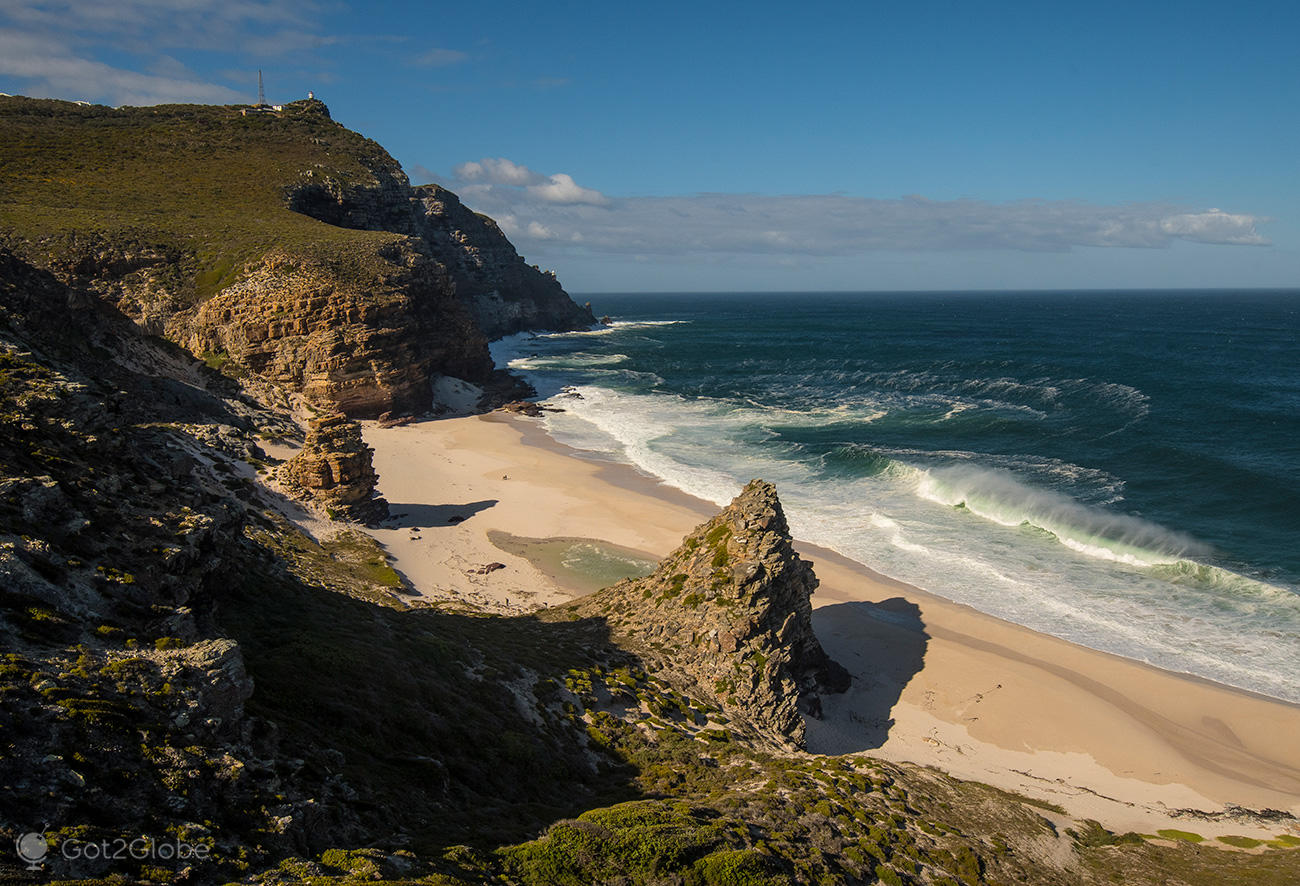
Another perspective of Dias Beach, with the Ponta do Cabo lighthouse in the background.
The Storm Beach of Bartolomeu Dias
Soon, we reach the top of Praia de Dias. A warning warns of the dire danger of any attempt to bathe in those waters. This same danger was drawn into the sea as we had seen it in few other places.
Masterful waves rushed over the beach with disconcerting violence and the wind pushed the water behind them into the sea so intensely that their action produced large white radials, similar to those left by helicopters when they glide, shallow, over the Water.
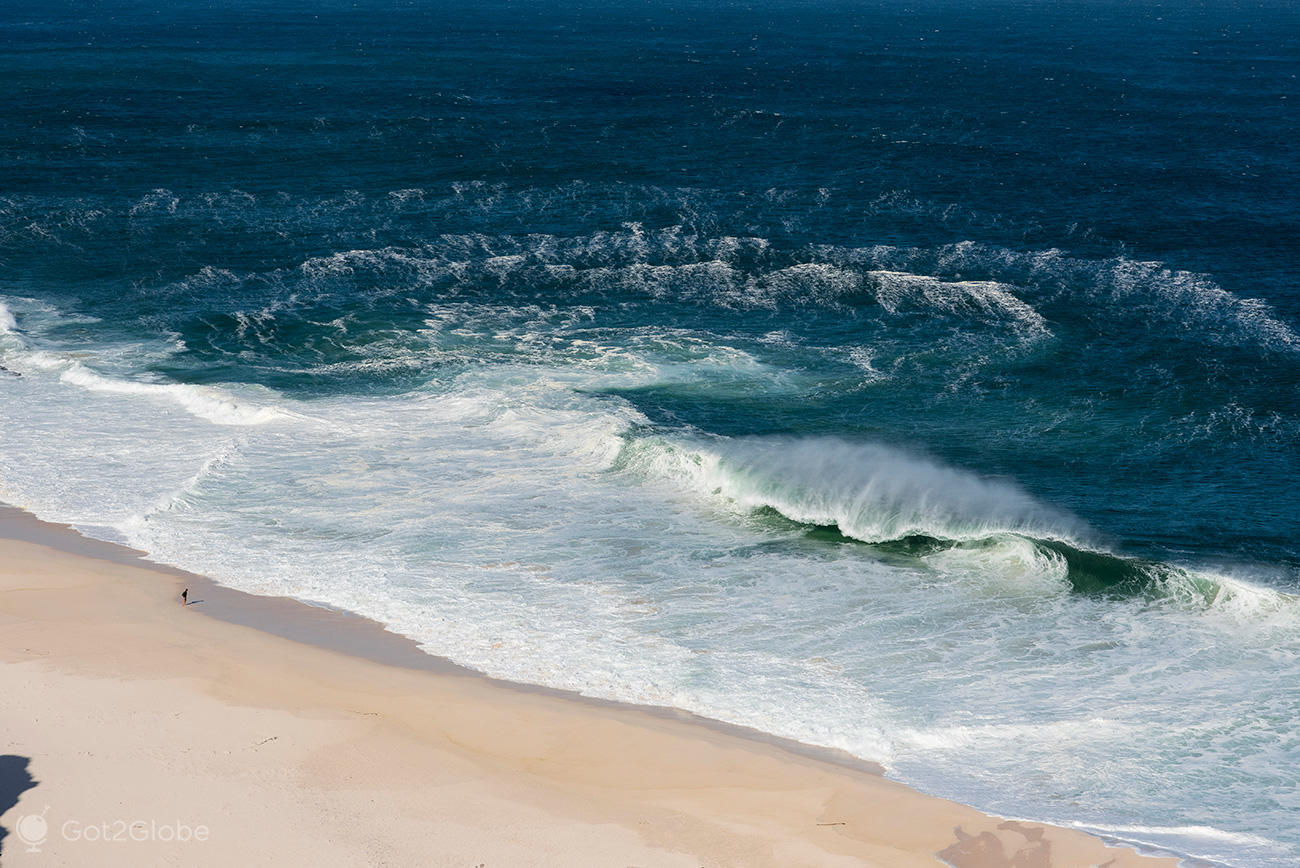
Powerful waves, currents, powerful winds and icy water make Praia de Dias impractical for bathing. But there are always those who try...
We sit and enjoy the breathtaking maritime wildness.
As we do so, the hardships experienced by Bartolomeu Dias, Vasco da Gama and all the navigators and sailors who followed them come back to mind. Bartolomeu Dias, the pioneer, ended up giving his life to Cabo.
D. João II and the Crucial Mission of Bartolomeu Dias
In 1488, D. João II commissioned him to look for the Christian king Prestes João and to find a route to the Indies. The two caravels of about fifty tons that he commanded sailed smoothly along the always busy Angra dos Ilhéus (next to the present Namibian city of Lüderitz) and Cabo das Tormentas.
But then they entered one of the terrible storms characteristic of the area.
The chronicles say that the boats were left out of control for thirteen days, struggling with the wind and the waves. When the calm arrived, Bartolomeu Dias ordered navigation to the east, in search of the coast. It only found sea and decided to head north.
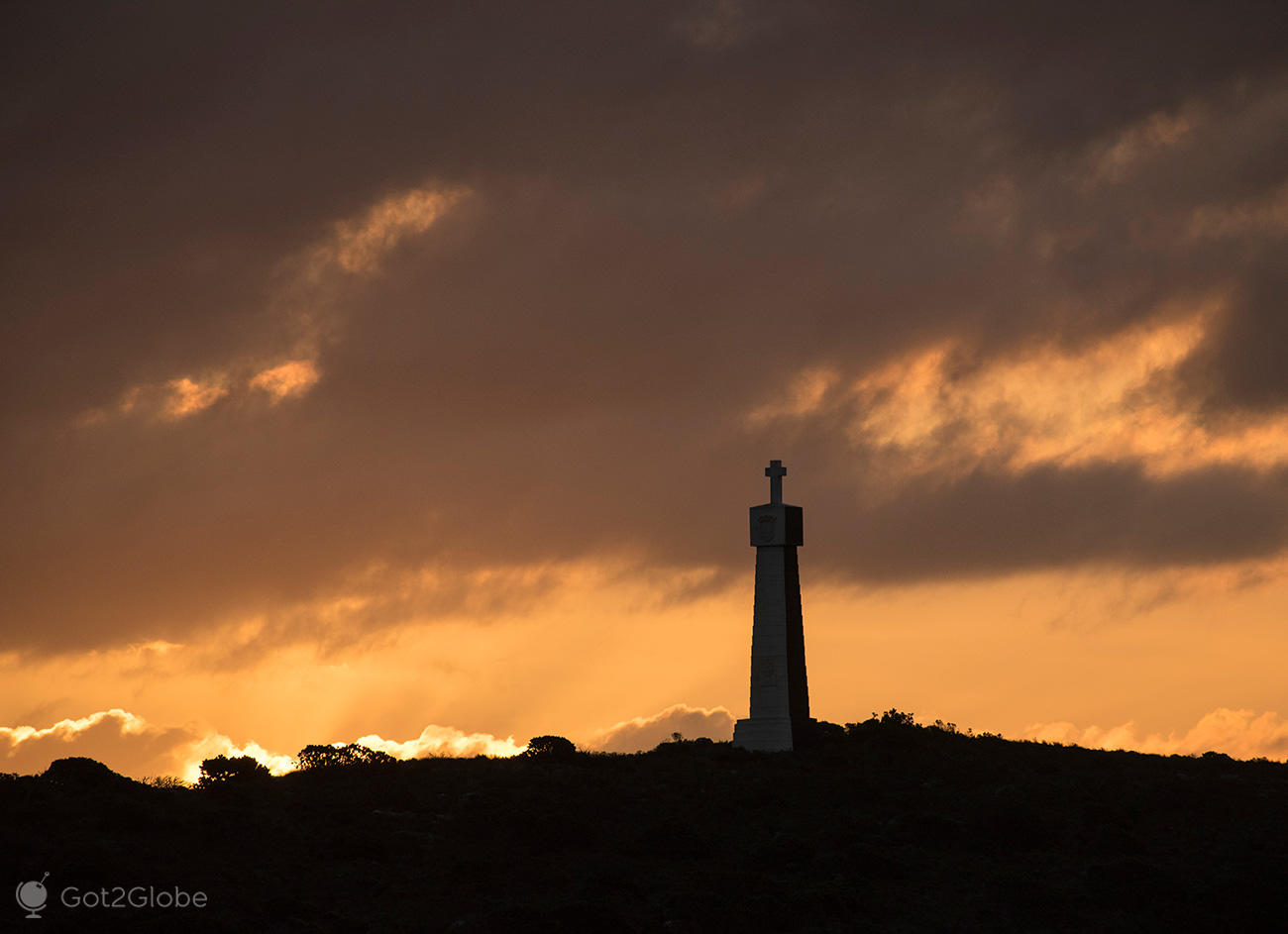
Bartolomeu Dias' pillory at sunset. Not far away is the one dedicated to the navigator Vasco da Gama. Both were ordered to be erected by the Portuguese state
In that hit, it detected several ports off the coast of South Africa today. After passing the bay of what is now Port Elisabeth, he came upon a river. Bartolomeu Dias called it the Rio do Infante. Then, worn out by the many days of agony he had lived through, the crew forced him to return to Portugal.
On his way back, Dias realized that he had skirted the southern tip of Africa.
King João II decreed the famous change of the name Cabo das Tormentas to Cabo da Boa Esperança. The epic of the Portuguese Discoveries continued to flow, aimed at the Orient as never before.
Bartolomeu Dias' feat proved so revolutionary for the mercantile order that prevailed between the Old World, Africa and Asia that the Cape of Good Hope received all the attention and its visit by travelers – sailors or mere laymen of the sea – is still celebrated today.
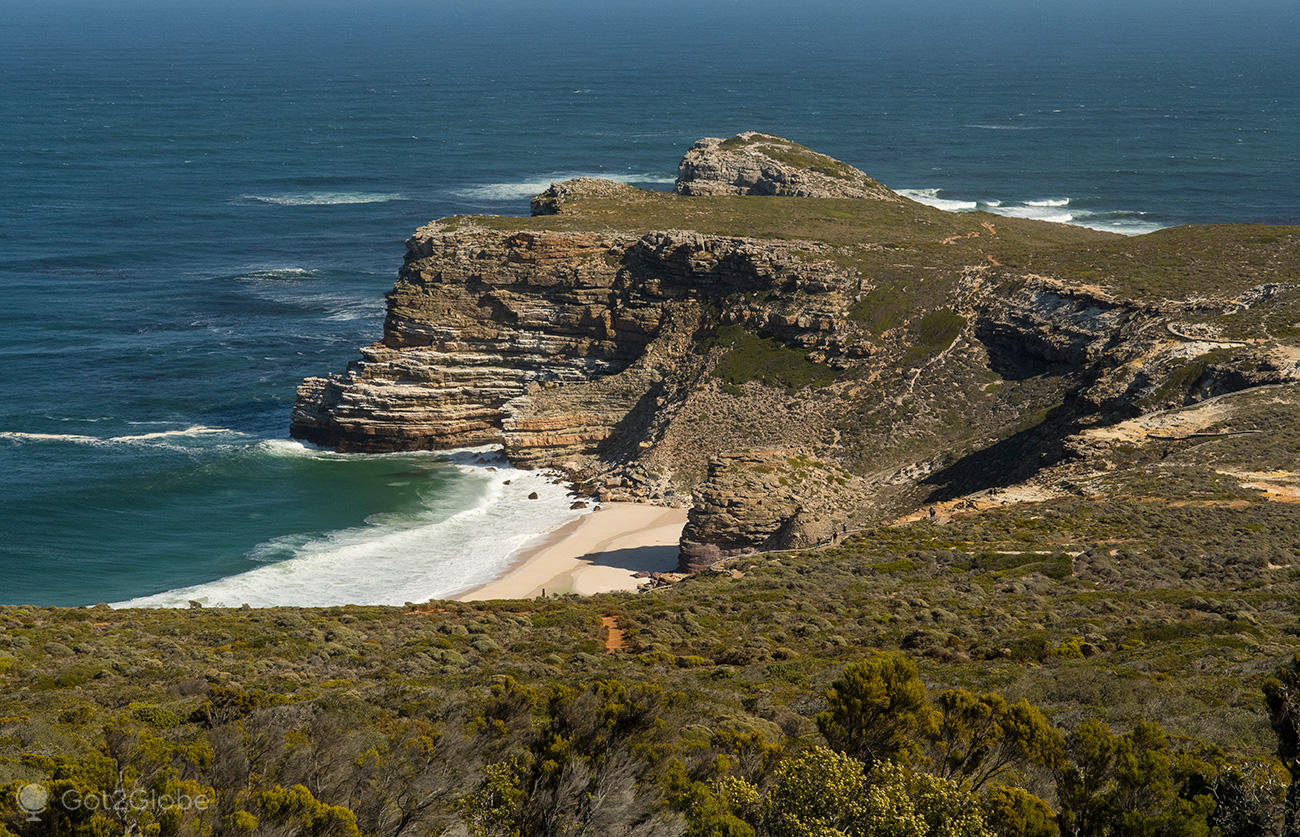
The Cape of Good Hope, well designed beyond Praia de Dias.
The Ends of the Cape of Good Hope
We leave Praia de Dias. We proceeded up a new headland. The more we climb, the more the wind recovers the aggressiveness that it had already revealed to us at Ponta do Cabo.
Still, tourists imitated themselves in chilling photographs, in the riskiest corners of that extreme landscape.
Only another long trail separated them from the base of the Cape, where those less suited to steep hikes or over sharp cliffs were content with the usual photos behind the wooden plaque that identifies them, in afrikaans and in English, the ultimate southwestern point of the African continent, not the south.
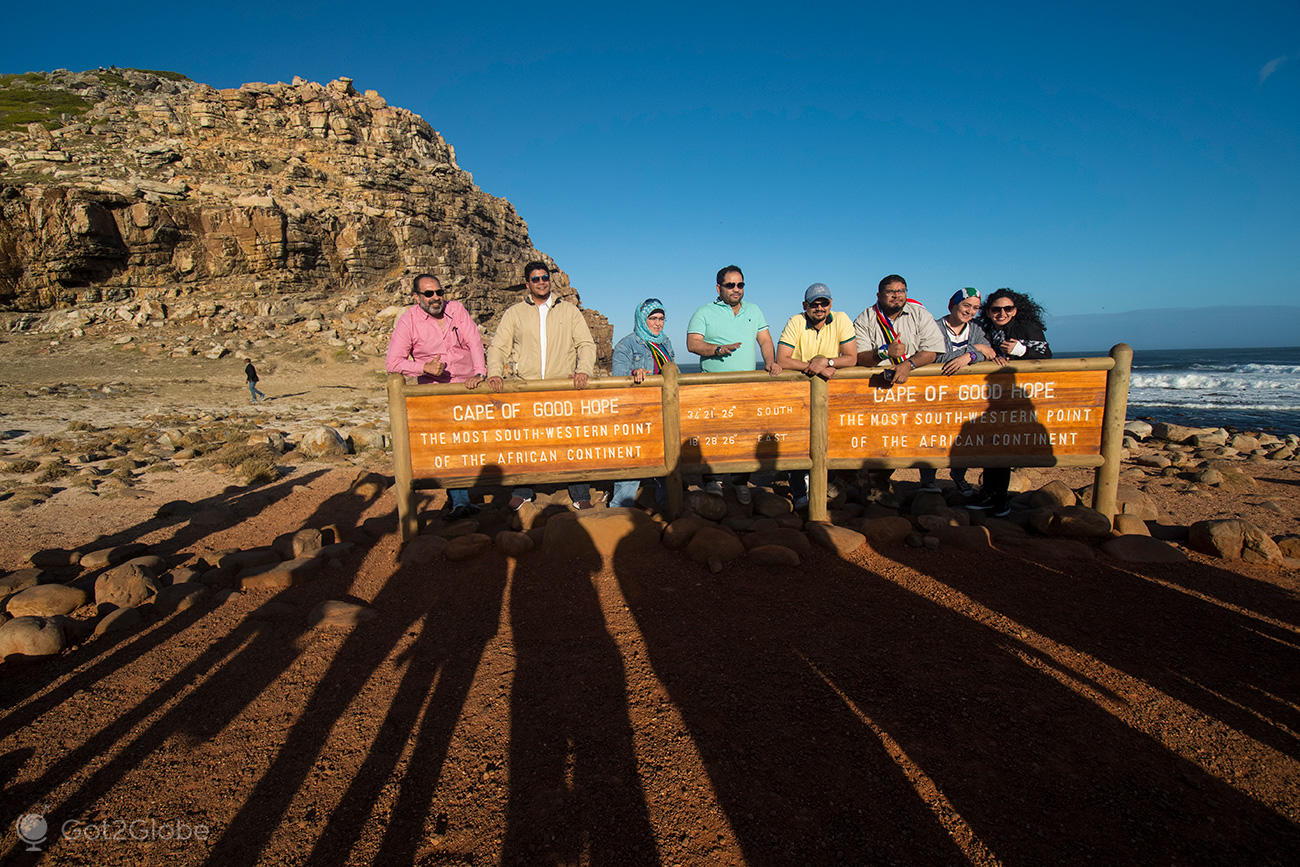
A group of visitors is photographed behind the emblematic plaque of the Cape of Good Hope
This one is located in the much less exuberant and trendy Cape Agulhas, 150 km to the east.
On the path to discover Dias, Vasco da Gama got used to overcoming successive storms and the Cape of Good Hope in general: once, twice, three times, the same number of voyages that he took to a good port for India.
He ended up dying in Cochin at the age of fifty-five. As for Bartolomeu Dias, fate and the Cape of Good Hope proved cruel. In 1500, Dias was one of the captains of the second “Indian” expedition led by Pedro Alvares Cabral that discovered Brazil and continued east, towards India.
On the 29th of May, four of the ships on this expedition were faced with another huge storm off the Cape. All disappeared, including the one captained by Bartolomeu Dias, then fifty years old. For Dias, Cabo has never ceased to be Tormentas.
Ostriches on the Beach. Unexpected interaction with Cape Fauna
When we remember this fact, we keep double admiration for both. We continued to explore the scenarios of those confines until darkness took us the privilege.
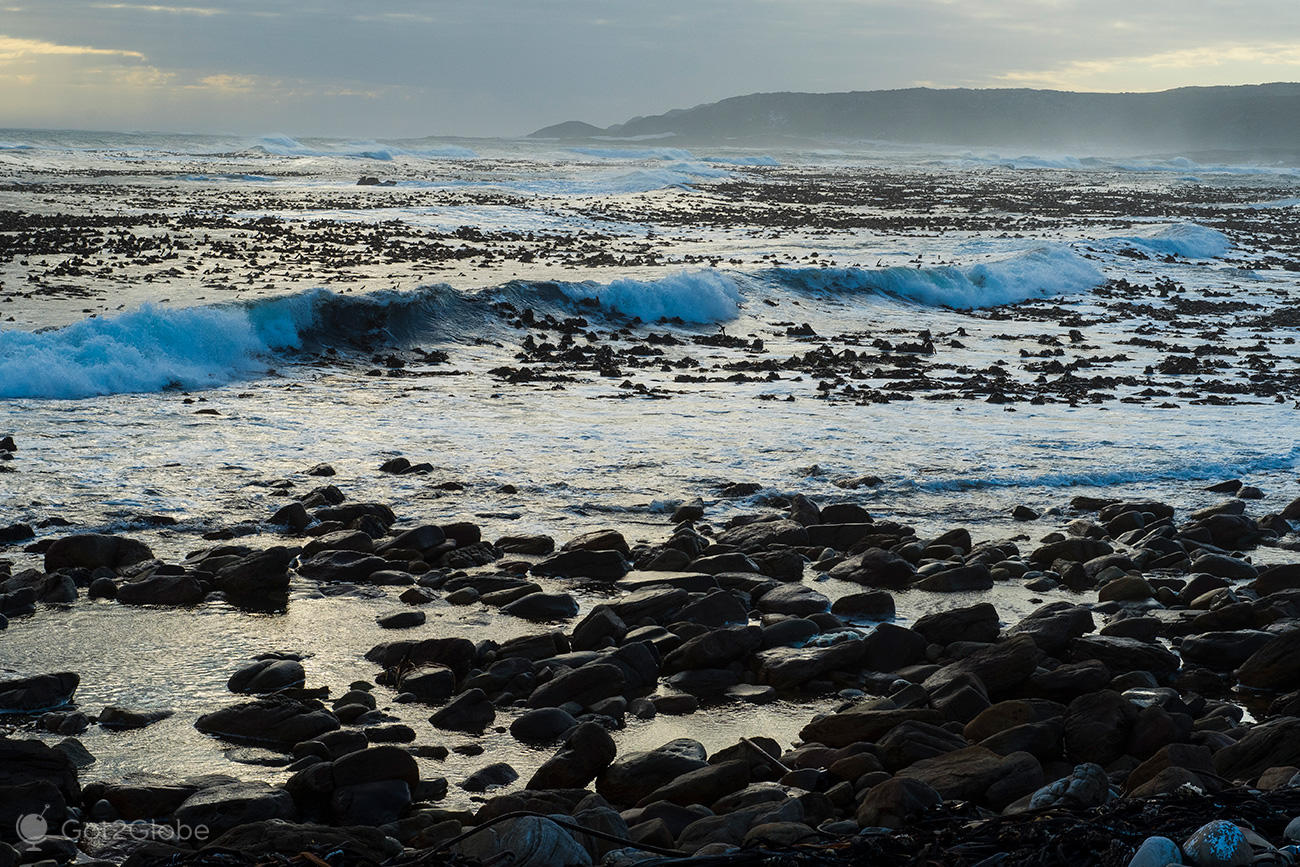
Basalt pebbles and a dense colony of logs of algae fill much of the coast north of the Cape.
A forest of great algae, like the ones we had seen off Cape Town, filled the sea there, much grayer and smoother than on Dias beach.
With the sun about to set, we leave the area of the plate that is always crowded and head towards the park exit.
We don't even do three hundred meters.
Two ostriches roamed the seashore in search of food. We stopped and photographed them from a distance, not as much as the one in which we glimpse several others, trying to overcome a rocky barrier that separated them from their parents.
A trail of surfers leads us to their surroundings and allows us to appreciate their behavior in that uncomfortable situation.
Always as close together as possible, the young birds lined up and stretched their heads in such a synchronized way that they seem to us to be a single frightened creature, a kind of winged Indian goddess Shakti.
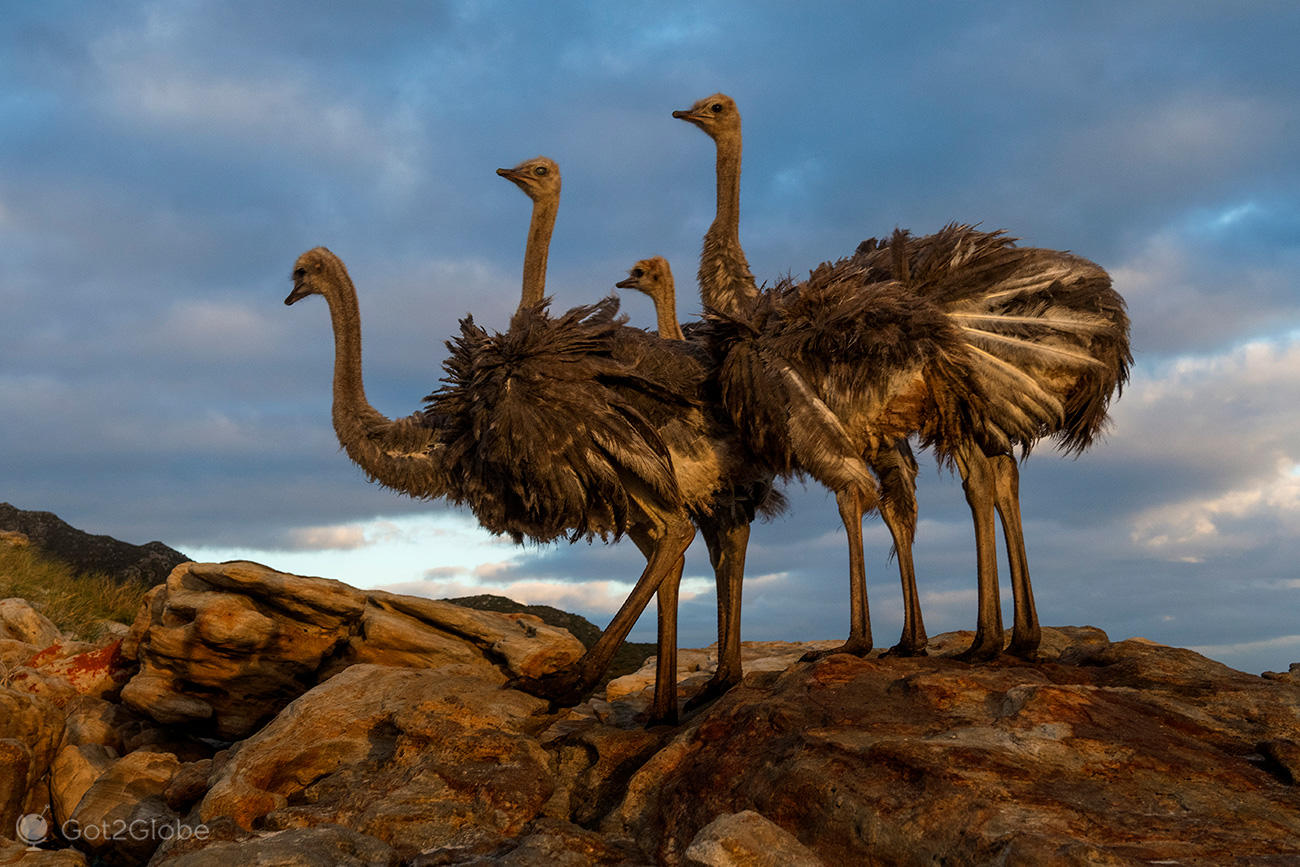
Young ostrich golden by the light of the last sun of the day, they keep together in the distress of seeing blocked access to their parents.
The sun begins to get rid of the purple clouds that imprisoned it. Focuses on the beach and on the flock of birds. These, grouped by Nature, show themselves, also yellowish by it.
When the big star breaks free, it dyes the entire beach a resplendent gold and generates magical silhouettes of birds.
These were the last and most unusual images we kept of the Cape.
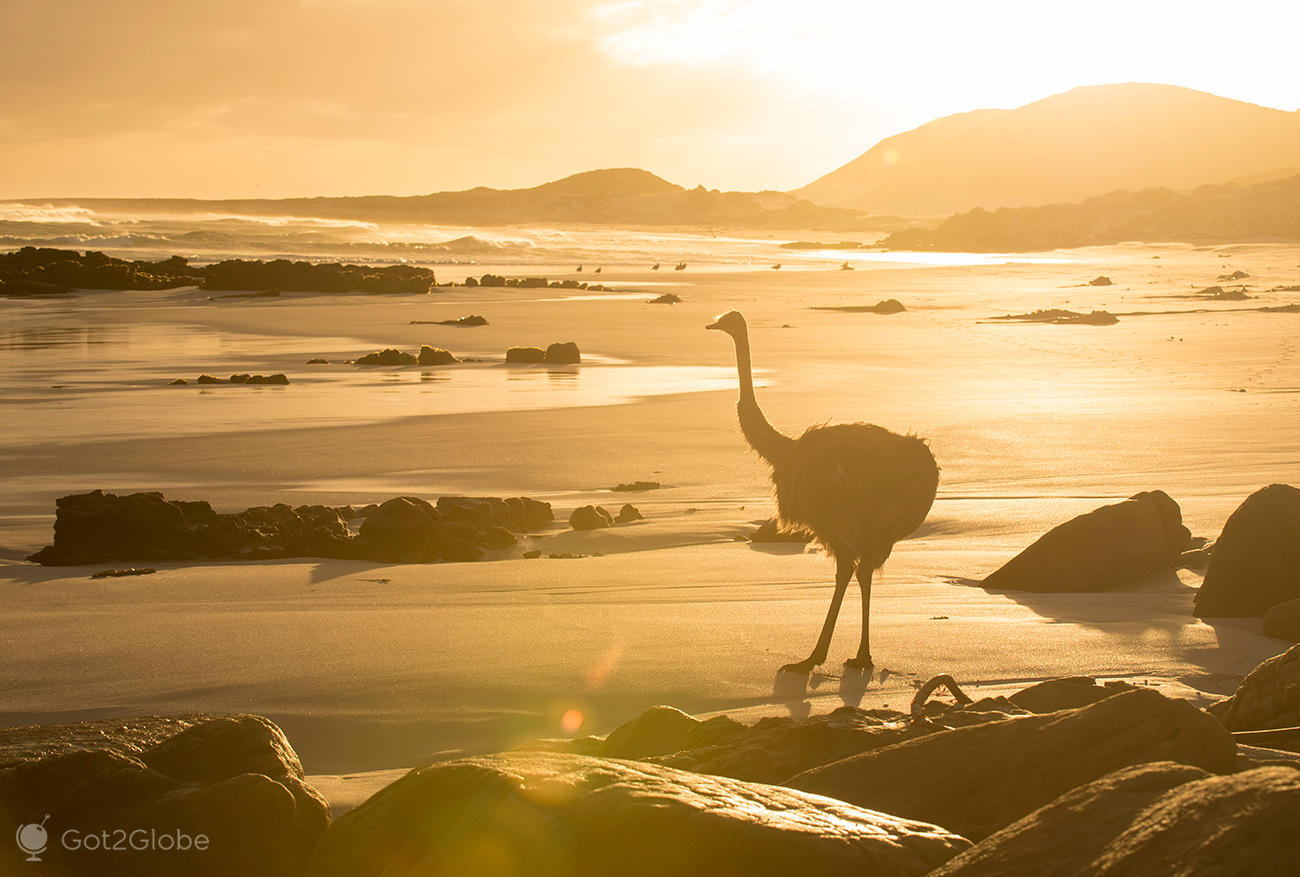
Ostrich roams the sand of a beach near Cabo da Boa Esperança, at the end of the day.
